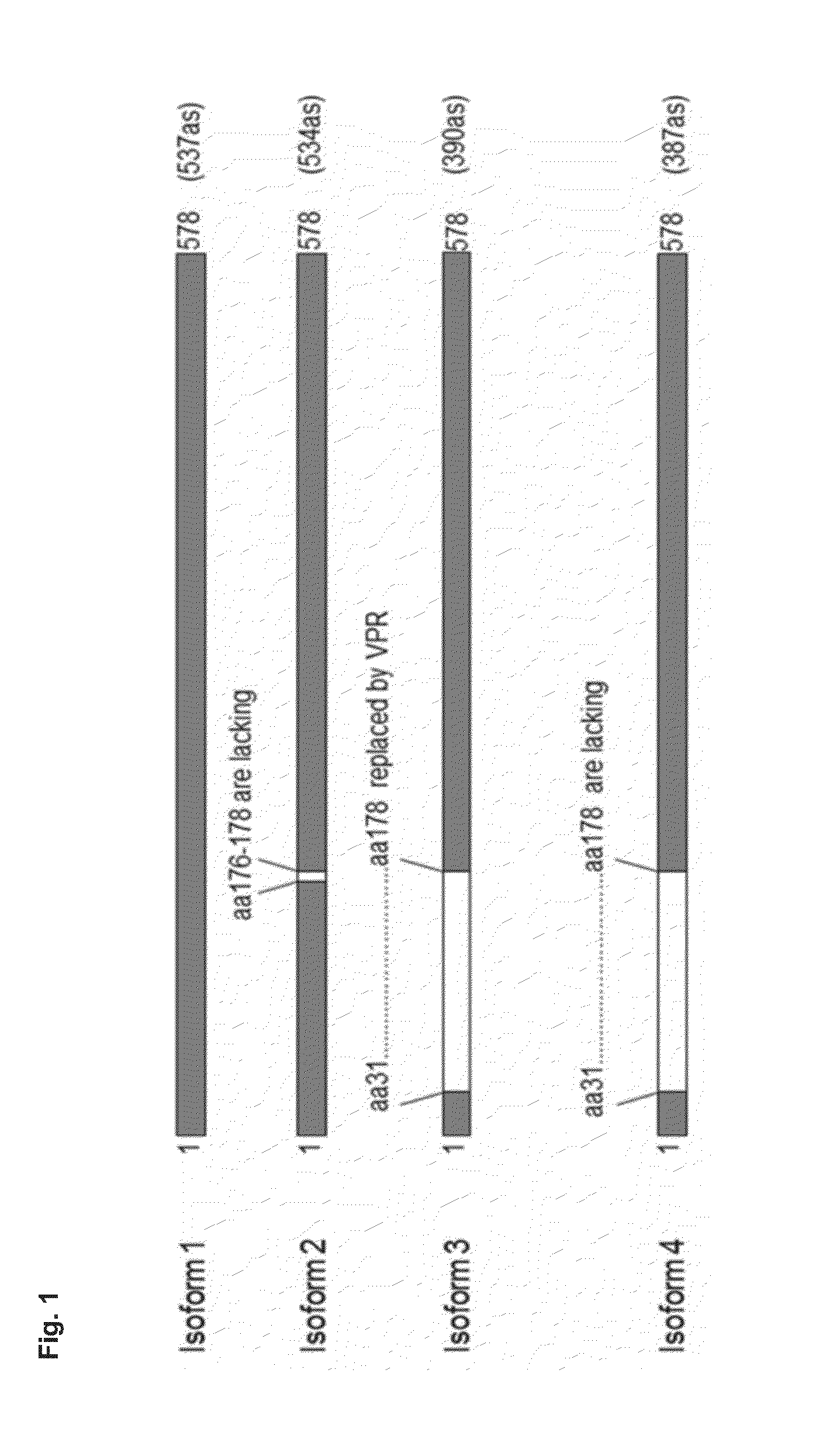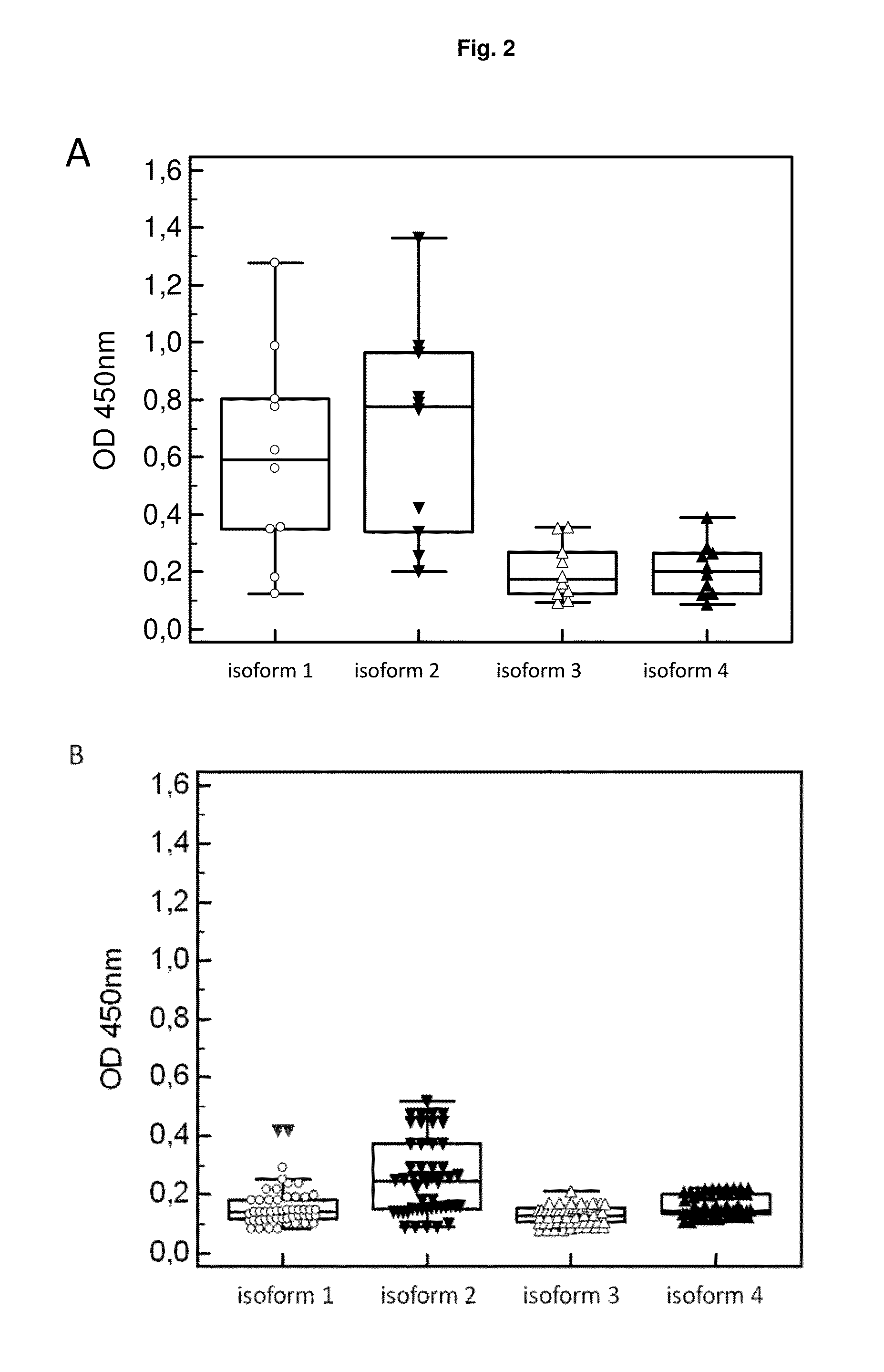Gp2 isoforms and their use in autoantibody capture
- Summary
- Abstract
- Description
- Claims
- Application Information
AI Technical Summary
Benefits of technology
Problems solved by technology
Method used
Image
Examples
example 1
Anti-Glycoprotein 2 Antibodies in Patients with Celiac Disease are Directed Against the Long Isoforms 1 and 2
[0181]The experiments provided herein show that in serum samples obtained from CeD patients, significantly higher levels of IgG to the isoform 1, 2, and 3 of GP2 cGP2red with those in blood donors were observed. IgG reactivity to isoform 4 was not different (p >0.05). In contrast, IgA levels to all four GP2 isoforms showed significantly higher levels in de-novo celiac disease patients than in controls. There was a significantly higher reactivity of IgG and IgA to the longer GP2 isoforms 1 and 2 of GP2 cGP2red with the shorter isoforms 3 and 4.
Subjects
[0182]Ten serum samples from patients with de-novo CeD and 50 control sera from healthy blood donors (BD) were assessed. The median age of the 40 patients with CeD (8 females) was 16 years with an interquartile range (IQR) from 6 years to 22 years. The median age of the BD (23 females, 27 males) was 24 years (IQR 18-41). Clinical...
example 2
Anti-Glycoprotein 2 Antibodies in Patients with CD are Directed Against the Long Isoforms 1 and 2
[0187]The invention is also based on the finding that the GP2-isoforms as disclosed herein are surprisingly well suited for the diagnosis or therapy control of chronic inflammatory or other autoimmune diseases, especially Crohn's disease (CD) and Ulcerative colitis (UC). In particular, the novel GP2-isoforms as described herein allow a more reproducible and more accurate differentiation between CD and UC. Autoantibodies to the shorter isoforms of GP2, in particular isoform 4, can be used for the differential diagnosis of inflammatory bowel diseases and show a better differentiation of Crohn's disease and ulcerative colitis patients.
Subjects
[0188]44 patients with CD, 30 patients with UC and 21 blood donors were tested for anti-GP2 isotypes IgG and IgA. Clinical diagnoses were based upon standard clinical, radiological, endoscopic and histological criteria.
Results
[0189]IgG to GP2 isoform 1...
PUM
| Property | Measurement | Unit |
|---|---|---|
| Fraction | aaaaa | aaaaa |
| Fraction | aaaaa | aaaaa |
| Fraction | aaaaa | aaaaa |
Abstract
Description
Claims
Application Information
 Login to View More
Login to View More - R&D
- Intellectual Property
- Life Sciences
- Materials
- Tech Scout
- Unparalleled Data Quality
- Higher Quality Content
- 60% Fewer Hallucinations
Browse by: Latest US Patents, China's latest patents, Technical Efficacy Thesaurus, Application Domain, Technology Topic, Popular Technical Reports.
© 2025 PatSnap. All rights reserved.Legal|Privacy policy|Modern Slavery Act Transparency Statement|Sitemap|About US| Contact US: help@patsnap.com



